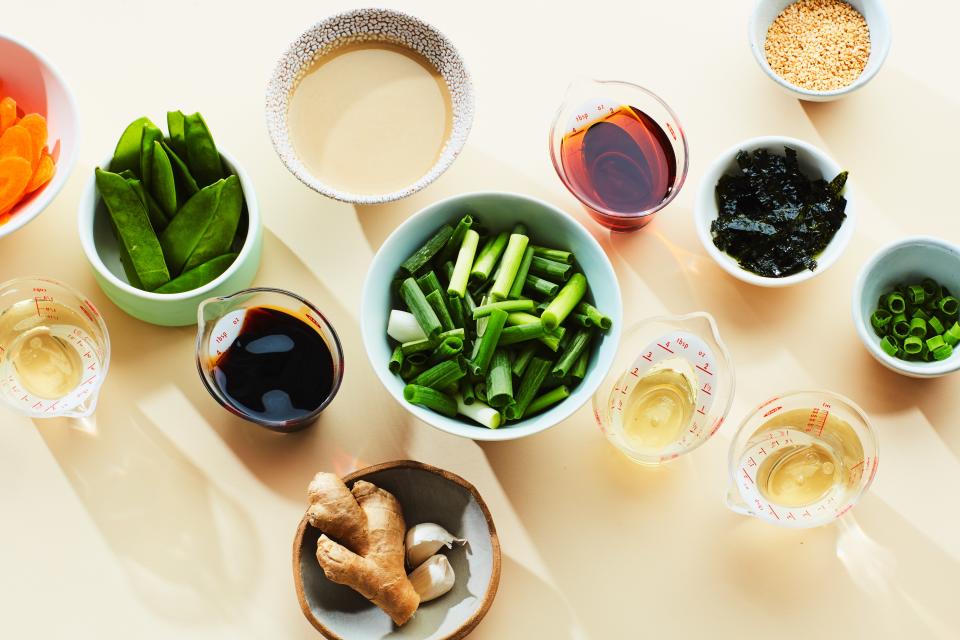I Tried Doing Mise en Place Every Time I Cooked for a Week
I've always wanted my home kitchen to look like one of those cooking videos you see on Facebook, or those cooking segments you see on morning talk shows. I want ingredients that are just sort of magically there, perfectly portioned into tiny glass bowls, so that all that's left to do is mix them together. I want to be calm and organized and cheerful. I want my makeup to look as if applied by a professional, and I want to cook in great outfits.
Reality always gets in the way. I come home from work and haphazardly chop and toss things together, throwing away junk mail and doing dishes in between prepping ingredients. Never have I prepped my ingredients in advance; I don't even own the bowls necessary to do that.
Plus, I've always harbored a tiny amount of skepticism about prepping ahead. Using all of those bowls would create exponentially more dishes. Would it really save time? Or would it just be fussy, with more cleanup?
To find out, I dedicated myself to mise en place—the technical term for prepping and portioning out all of your ingredients—for an entire week. First step: buying the right gear.
What to Buy If You Want to do Mise en Place at Home
Like all organization-based tasks, mise en place requires you to buy things—namely, glass bowls of various sizes for portioning out your ingredients. You'll also want good measuring cups. Here's what I'd recommend to get started.
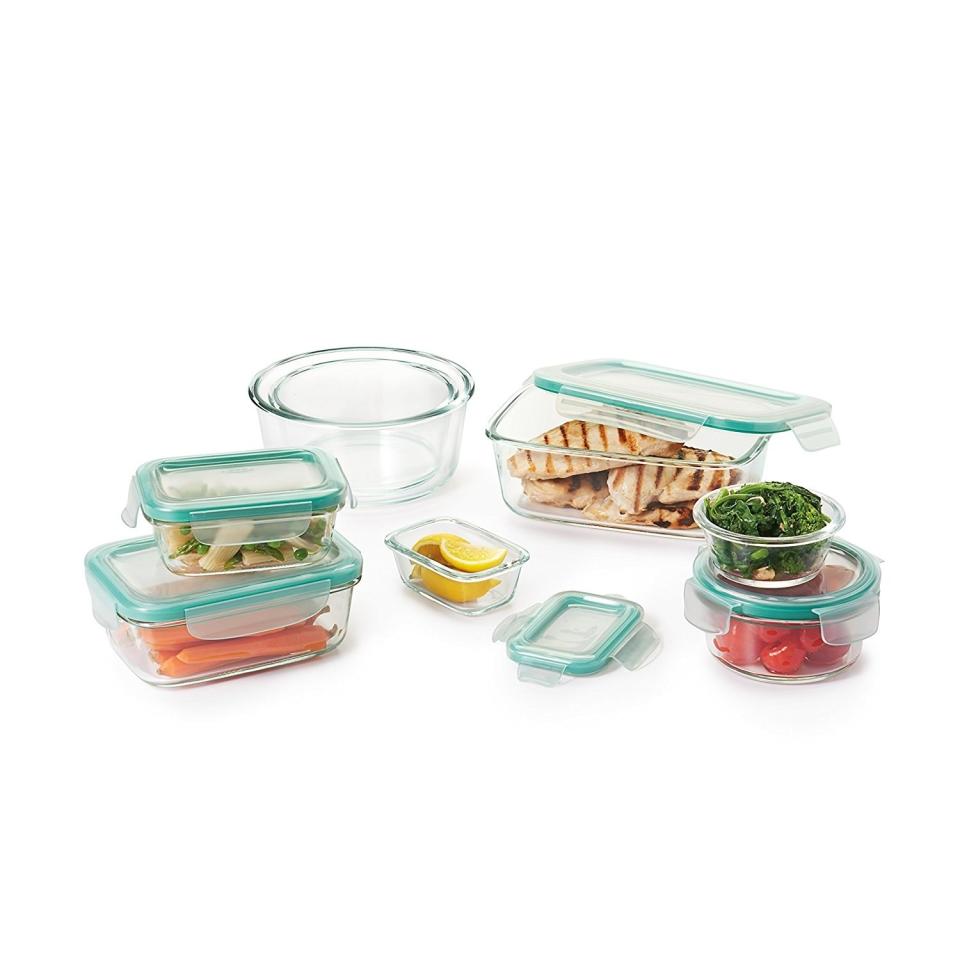
OXO Good Grips 16 Piece Smart Seal Leakproof Glass Food Storage Container Set, 49.95 on Amazon
Since this was just a trial period, I held off on buying true mise bowls. Instead, I used the OXO storage containers that I normally use for storing leftovers and bringing food to work. They worked well because they come in varying sizes, including small bowls for tiny amounts of vanilla extract or lemon juice. Plus, since they come with covers, they can be used as storage for any leftover herbs you have prepped but didn't end up using.
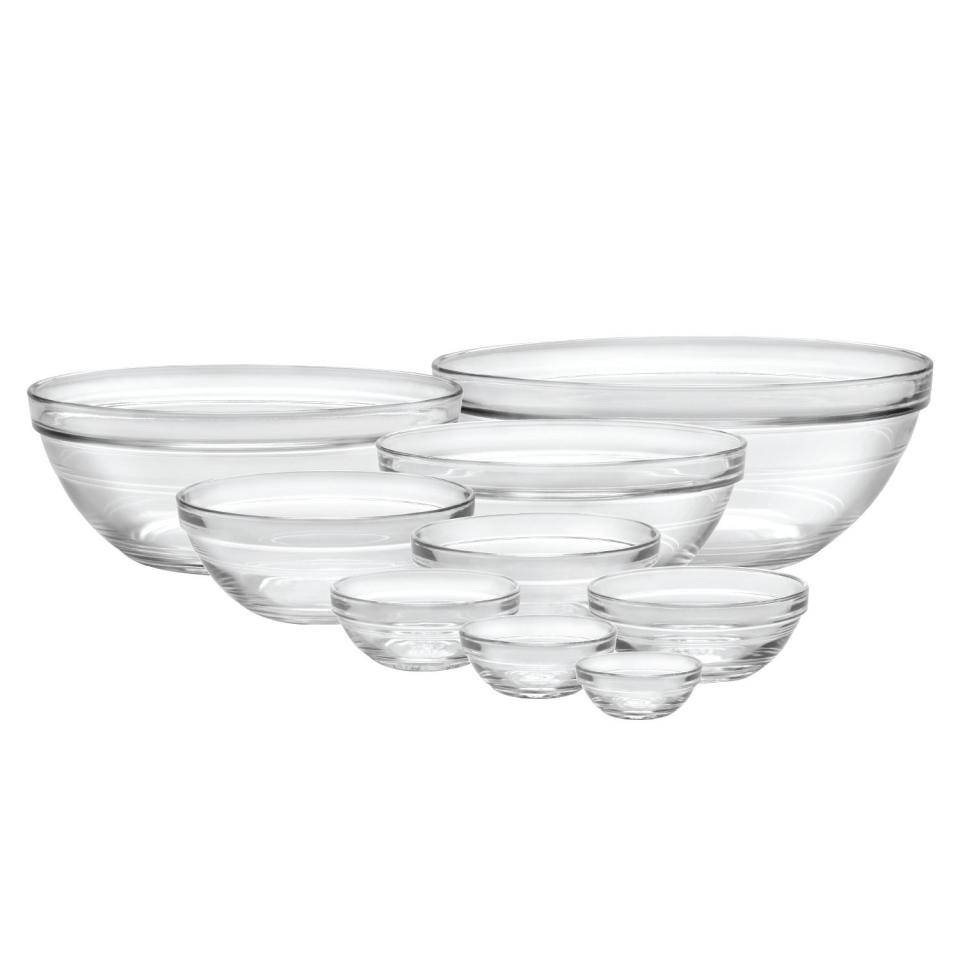
Duralex Stackable 9-Piece Bowl Set, $28.49 on Amazon
More classically, you'd use these stackable glass bowls, which come in a wide range of sizes, for mise en place. They work well for portioning out both large and small amounts of ingredients, and of course they can double as mixing—or even serving—bowls.
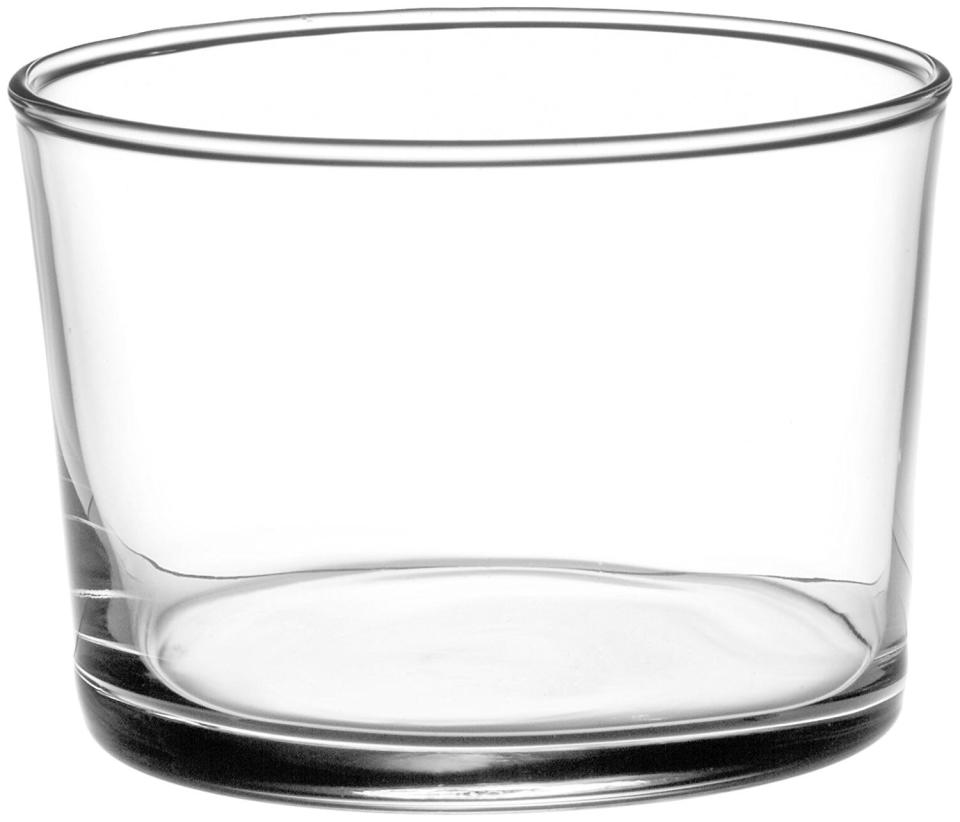
12-Set Bormioli Rocco Bodega Tumbler Mini Glasses, $19.99 on Amazon
These are my favorite all-purpose glasses for wine, cocktails, and small servings of ice cream or desserts. I was happy do discover they also functioned well as mise bowls for small amounts of ingredients.
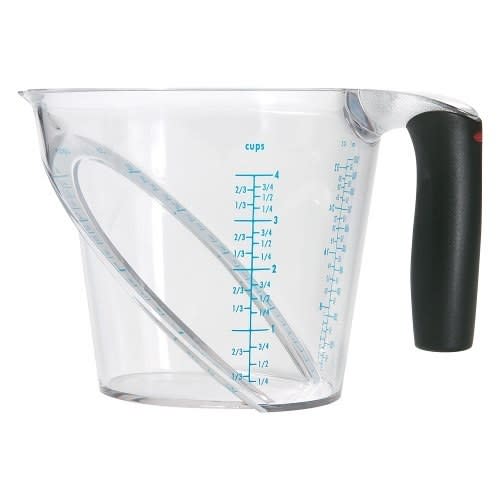
OXO 4-Cup Angled Measuring Cup, $9.99 on Amazon
Follow my boss David's advice and get a big liquid measuring cup. You can measure both big and small quantities in this thing, and it can double as a mixing bowl.
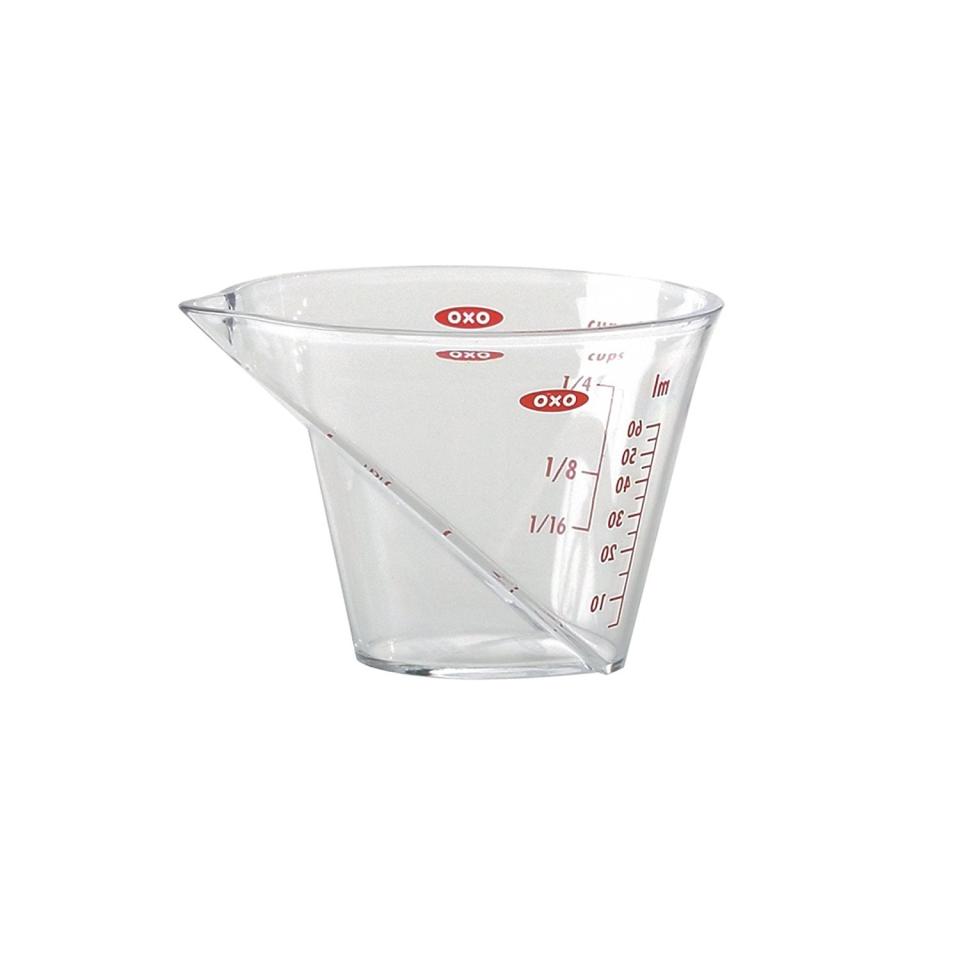
OXO Mini Angled Measuring Cup, $4.99 on Amazon
It's also very useful, though, to have one of these teeny liquid measuring cups, since you'll be precisely doling out your amounts of oil and vinegars and lemon juice when you do mise en place.
My week of mise, day 1
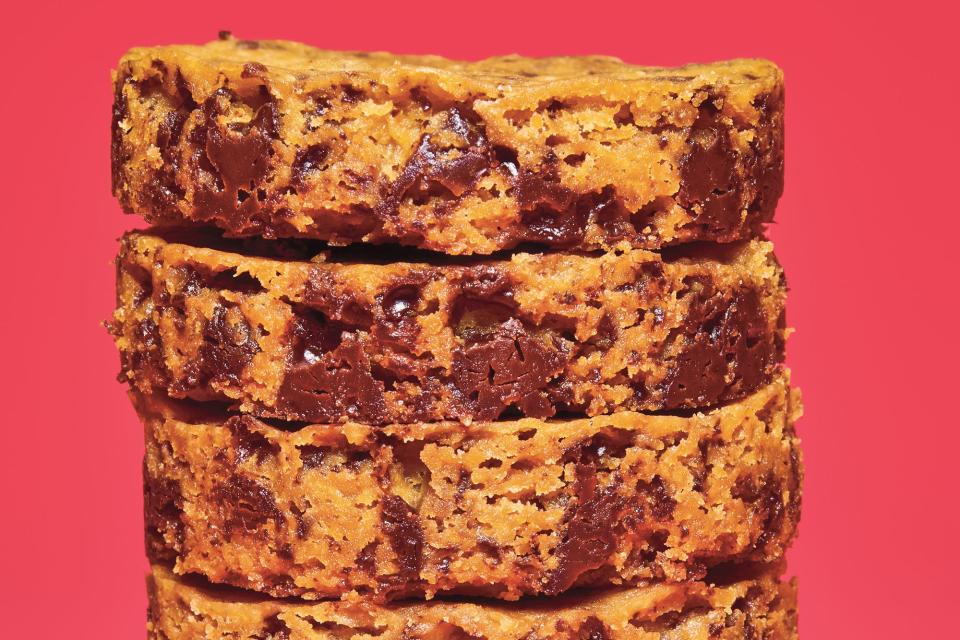
Espresso Chocolate Sablés
Photo by Davide LucianoBecause precision is so important in baking, I figured it was a good place to start my experiment. Turns out that thing that every pastry chef has told you is true: you should absolutely portion out all of your ingredients before you start baking.
For Dorie Greenspan's delicious espresso sables, I cubed and portioned out the butter, powdered sugar, vanilla extract, espresso powder, flour, etc. into small bowls. Usually I skip letting my butter fully come to room temp when I bake, but the neatly laid out bowls inspired patience in me. I let the mised out ingredients sit out for a couple of hours. Then, I mixed them together per the instructions.
Since I had prepped everything for myself in advance, the baking process went faster and easier than ever. The butter and sugar creamed perfectly because the butter was at the optimal temperature, and I was less prone to haphazardly dusting flour into every corner of the kitchen because I wasn't sloppily measuring things out right before they made their way into the mixing bowl. Yes, there were more dishes, but I'd guess that cleanup was actually faster (case in point: there weren't any countertops caked in flour and sugar and butter that needed scrubbing down, because I'd portioned and measured everything calmly and neatly.)
Day 2
For this (frankly, incredible) salad recipe from Food52, I portioned out the shrimp, olive oil, and balsamic, and prepped my sliced tomatoes, radicchio, and chives ahead of time. Everything went into tiny bowls. Again, the mise en place process put me in a forward-looking, patient, organized mindset. The radicchio had time to actually marinate in the olive oil and balsamic, a step I would have normally skipped. The shrimp similarly marinated in olive oil and salt, soaking up more flavor. Cooking was easier and more precise. And I actually had more time for the multitasking I discuss above: whereas in my previous life I might have sliced the tomatoes while the radicchio and shrimp cooked, instead I used this time to was some dishes.
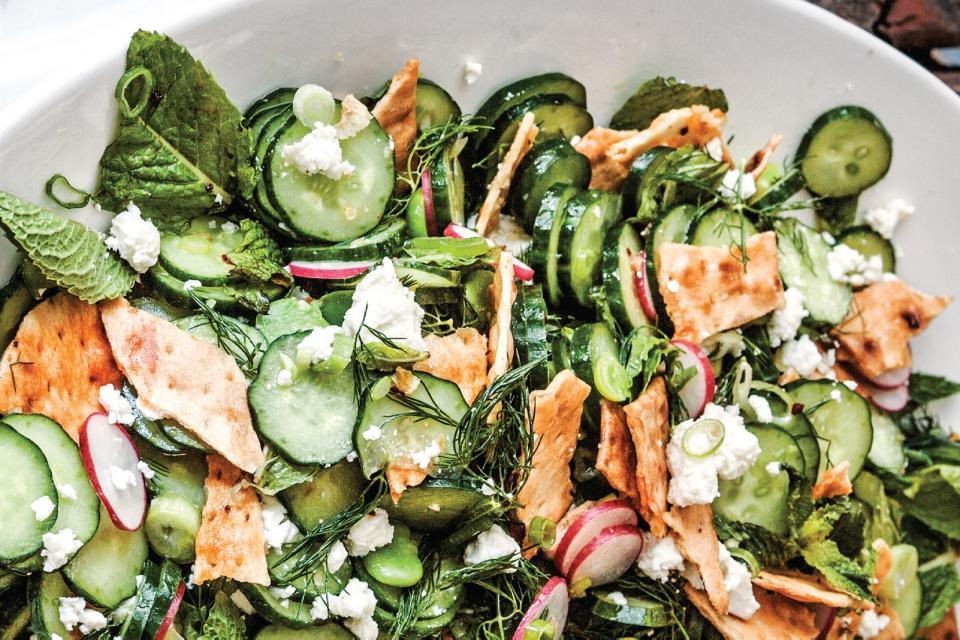
Sam’s Spring Fattoush Salad
Photo by Ed AndersonDay 3
By now you get the gist. For this Spring Fattoush Salad, I sliced all of my vegetables and put them in glass containers; measured my cheese and placed it in a little bowl; and portioned out my oil and lemon juice. Normally, I'd have cut the vegetables while my bread was toasting in the oven; I would have dumped unmeasured olive oil over the whole thing at the end and squeezed a lemon over the top, without stirring together a real dressing. But measuring everything in advance meant dinner came together with unprecedented smoothness. And I'm convinced it tasted better than it would have otherwise.
Not going to lie though—the extra dishes did grate on me a little this time. This is probably because normally when I make a salad I just use one cutting board to make piles of chopped vegetables and one big bowl for tossing, dressing, and eating. I still think mise is worth it for the quicker, more organized, less harried cooking, though. (Also this salad is so, so good—make it!)
Day 4
Another day, another salad. Another argument for mise-ing out your ingredients. With my shallots minced, my herbs prepped, my olive oil portioned out, and my lemons squeezed into a glass container, all that was left to do while my farro cooked was listen to the new Selena Gomez song 200 times.
Another observation about doing mise en place? It makes you follow a recipe, really to the t. For something like a grain salad, my broken, disobedient brain can't help but improvise normally. I'll be like, let's add some Aleppo pepper. Let's use vinegar instead of bothering to buy and squeeze lemons. My newfound organization strategy made me more obedient. And while I hate to admit it, food is often better when you really follow the recipe.
In Conclusion...
The extra dishes are worth it. When you mise, you become a calmer, more precise cook who gets better and more consistent results. You make less mistakes. You have more time for cleanup and multi-tasking. And believe me, your little mise dishes will be easier to clean than the disorganized mess you make of your kitchen when you don't portion things out. So go forth and make your cooking life a Facebook video. You can make it happen. With the power of organization, there is truly nothing you can't achieve.
